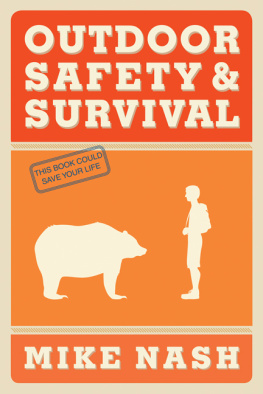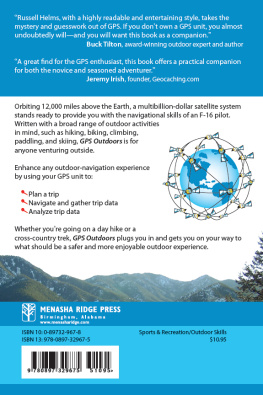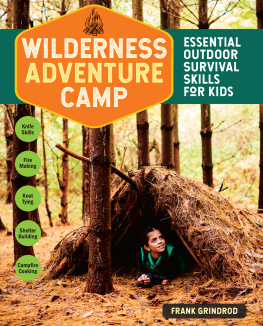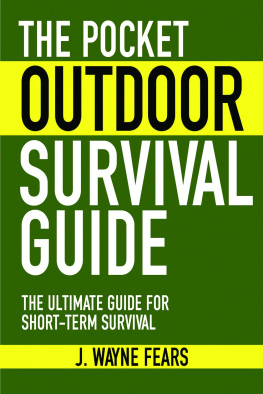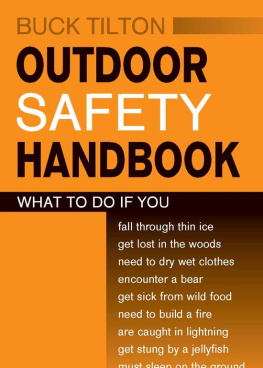ABOUT THE AUTHOR
Mike Nash has more than 40 years of experience in the Canadian outdoors, much of it in north central British Columbia. For five years after moving to BC in 1978 he was a volunteer member of the Prince George Search & Rescue group. In ensuing years, he led trips for Prince George outdoor clubs and has written about and taught outdoor safety, survival and leadership in the Prince George community. He held three industrial first aid tickets during a five-year period in the 1980s; led a site evacuation team for ten years for a forest industry employer in the 1990s; and held a wilderness first aid certificate in the early 2000s.
For over 25 years, Mike has served on many public advisory groups related to the outdoors, including forestry, wildlife and backcountry recreation. He wrote a community newspaper column on the outdoors from 1995 to 2005, and his first full-length book, Exploring Prince George: A Guide to North Central BC Outdoors, was published in 2004 and reprinted in 2007. After a friend of his died in a grizzly bear encounter in 1998, Mike spent several years working on a biography, The Mountain Knows No Expert: George Evanoff, Outdoorsman and Contemporary Hero, published in 2009. After giving a series of safety workshops for students and staff at the University of Northern BC in the early 2000s, and later addressing a forest service safety day seminar in 2005, Mike organized the highlights of the extensive outdoor safety material he had gathered over several decades into a publication that might help others be safer in the outdoors. This book is the result.
ACKNOWLEDGEMENTS
I would like to recognize all of the individuals and organizations that I have been associated with in connection with the outdoors over the last 40 years, ever since my first overnight hike in Ontarios Algonquin Provincial Park in May 1970 when I shivered, tentless, in a cheap sleeping bag under a starry and frosty night on the rocky shore of Provoking Lake. They are too many to mention individually by name, but I learned, with them, to enjoy my time in the outdoors as fully and as safely as possible, and I have had many fantastic outdoor adventures and experiences in the process. In 1978 I moved to north central British Columbia, where I began to broaden my outdoor horizons with hiking and ski-touring groups and by joining a volunteer search and rescue group. In the 1990s I branched out from organized group trips and undertook a number of mountain treks in remote parts of British Columbia with just one or two companions. These helped me to expand my horizons and to build my confidence in the outdoors.
I wish to thank those who helped review and suggest changes to the first edition of this book, Outdoor Safety and Survival in British Columbias Backcountry, and to those, especially at Rocky Mountain Books publisher Don Gorman, editor Joe Wilderson and art director Chyla Cardinal who helped bring this second edition to a wider readership.
I make no pretense to being an expert in the outdoors; indeed, as the title of my previous book suggests, there may not be such a person. Nor do I claim to be technically proficient in any particular aspect of the outdoors beyond putting one foot in front of the other and trying to be comfortable with my surroundings. I have simply taken the opportunity as a writer to share what I have learned in four decades of outdoor experiences and the consequent safety awareness that I have developed.
Mike Nash
August 2011
APPENDIX A: LESSONS OF HISTORY, AN ANNOTATED LIST OF CLASSIC READING
I have gained a sense of what the human spirit is capable of from reading some of the greatest adventure and survival stories ever published. An added bonus is that for the most part, they are also wonderful reads. So, here is my recommended reading list, arranged by title rather than by author.
Annapurna, by Maurice Herzog. New York: Dutton, 1952, and later editions. A postwar classic that inspired many subsequent 20th-century mountaineers, Annapurna is the account of the first ascent of an 8,000-metre peak and of a frostbitten descent and later retreat through monsoon floods.
Arabian Sands, by Wilfred Thesiger. New York: Dutton, 1959, and later editions. One mans extraordinary explorations of Saudi Arabias Empty Quarter during the period 1945 to 1950.
Bartlett: The Great Canadian Explorer, by Harold Horwood; Garden City, NY: Doubleday, 1977. The biography of Newfoundlands Captain Robert Bartlett, considered to be the greatest ice navigator of the 20th century. As well as Bartletts considerable Arctic achievements on the east coast of North America and his key role in north polar expeditions, the book has an account of the loss of HMCS Karluk in the Arctic icepack in 191314 and the year-long survival story that ensued. Although Bartlett may have made some errors of judgment during this epic, his achievements were later described by maritime historian Thomas Appleton as the finest example of leadership in the maritime history of Canada. Other books have been written about the Karluk, including one by Bartlett himself and one by a member of his crew, William Laird McKinlay.
The Climb: Tragic Ambitions on Everest, by Anatoli Boukreev and G. Weston DeWalt. New York: St. Martins Press, 1997, and Into Thin Air, by Jon Krakauer. New York: Villard, 1997. Two very different accounts and perspectives of the tragic events on Mount Everest in 1996 and of the heroic rescue efforts and survival stories of those involved. I heard both Boukreev and Krakauer speak at the 1997 International Mountain Book Festival in Banff, less than two months before Boukreev, considered by many to be the strongest mountaineer in the world at the time, died in an avalanche on Annapurna on Christmas Day 1997.
Endurance: Shackletons Incredible Voyage, by Alfred Lansing. New York: McGraw Hill, 1959, and later editions. This story has been retold in many other books and films in recent years and may be the greatest self-help survival story of all time. It is certainly the finest account of exemplary leadership that I have come across. It is set in the Antarctic region from 1914 to 1916.
Escape from Lucania: An Epic Story of Survival, by David Roberts. New York: Simon & Schuster, 2002. The riveting account of Brad Washburn and Bob Batess 1937 epic first ascents and subsequent survival trek through the mountainous wilds of the Yukon after being abandoned on a glacier without their intended companions or the chance of a pickup.
Fatal Passage: The Untold Story of John Rae, the Arctic Adventurer Who Discovered the Fate of Franklin, by Ken McGoogan. Toronto: HarperCollins Canada, 2001. In this award-winning book, John Rae emerges as one of the most competent all-around outdoorsmen of all time. Of interest, McGoogan later told the counterpoint story in Lady Franklins Revenge: A True Story of Ambition, Obsession and the Remaking of Arctic History (Toronto: HarperCollins Canada, 2005), an account of a remarkable 19th-century woman.
The Forgotten Explorer: Samuel Prescott Fays 1914 Expedition to the Northern Rockies, by Samuel Prescott Fay, edited by Charles Helm and Mike Murtha. Calgary: Rocky Mountain Books, 2009. During a five-month period in 1914, Samuel Prescott Fay, with outfitter Fred Brewster and three other men, travelled through the largely unexplored territory of the northern Rocky Mountains between Jasper and the Peace River. As far as is known, this was the first party to make a continuous south to north traverse, travelling against the grain of the land on a route so arduous that it has never been duplicated.

